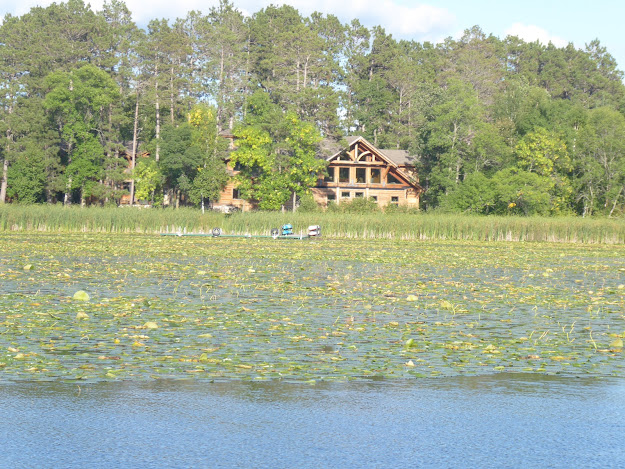Wadsworth Trail
I found this sign in the ditch near my Estensen ancestral farms near Cyrus. I never knew of the sign or the trail it marked. This humble sign in the ditch solved a couple of mysteries for me.
Mystery #1. How could the Barsness brothers, pioneers at Lake Minnewaska and Glenwood of the late 1860s, have wandered the prairies from St. Cloud to Glenwood without getting lost from time to time? What if there was a good trail?
Mystery #2. How could those strong Norwegians on skis travel between Glenwood and St. Cloud for supplies? Legends of them carrying 100 pounds of supplies for over 60 miles abound. How was it they met each other on such trips, way out on the prairie? What if there was a good trail?
There was a trail.
Note the dates on the sign, 1864-1870. At that time, the American Civil War was raging back East. In 1862 the Sioux Uprising in Minnesota took the lives of some 800 settlers and Sioux. The Sioux were driven west into the Dakotas. Early settlers out there were demanding protections from the Sioux so a new fort, Fort Wadsworth, was to be built at Sisseton.
Such a fort would require cannons, ammunition, food, etc. Thus, a supply trail would be required to outfit and resupply the fort. The Army would bring supplies up the Mississippi River to St. Cloud. Then the new trail, the Wadsworth Trail, would be built to support the 15-oxen teams required to cross the prairie. Here is an early picture of oxen on the trail.
The trail would shoot straight west from St. Cloud, along the south shore of Lake Minnewaska at Glenwood, on to Cyrus (and the Estensen family farm), then continue west to Morris where it would pick up the Pomme De Terre River. There is a marker at Morris too. Again, the trail pressed west to Browns Valley on the Minnesota and Dakota line. The oxen needed water the entire distance, so lake and river access were critical. There is a marker at Browns Valley too.
I found a few historical clips to share with you.
Starbuck:
The traffic on the Wadsworth Trail encouraged the construction of small waystation settlements to house travelers and provide supplies along the route. One of these waystations was located three miles northeast of present-day Starbuck, and is considered locally as a precursor to the town of Starbuck. The settlement was formed by eight members of the Wollan family, part of a wagon train of Norwegian settlers traveling from Iowa to Otter Tail County in 1867. Somewhat short of their original goal, they stopped along the trail and created the Wollan Settlement, also known as White Bear Center.
Morris:
Wintermute Lake at Morris may seem like a non-descript Minnesota lake but it's significant historically. It was a backdrop for the Wadsworth Trail. The name inspiration was from General James E. Wadsworth, Civil War general.
Morris history really begins with Gager's Station, a collection of log buildings amidst the trees near Wintermute Lake. There were several barns and a building to accommodate travelers. The post office there was called "potosi" - a wooden box with pigeon holes. Other features were a blacksmith shop and grog shop. It was the temporary county seat.
Up here, European civilization was just starting to stretch its legs. The Wadsworth Trail cut through Stevens County in an east-west direction. The trail wasn't totally fixed, as adjustments were made depending on the season, weather and road conditions.
The people using the Wadsworth Trial had fresh memories of the Sioux uprising. It has been called the "Minnesota massacre." There was a fear the Sioux might join hands with tribes further to the west. Soldiers were dispatched out here to try to quell any such resurgence in hostile efforts. European settlers needed basic protection.
The Wadsworth Trail became a stage route.
In the early days of the fort, supplies and equipment came up to St. Cloud on the Mississippi River. After 1866 the rails took over with the St. Paul and Pacific Railway.
Proceeding from St. Cloud into what must have seemed like a "great unknown," the route followed the already-established Red River Trail. This proceeded to Sauk Centre. There a new path was carved out, destination Glenwood. It snaked around south of Lake Minnewaska and came out here through present-day Hodges Township.
But as stated previously, it wasn't fixed. The travelers eventually preferred skirting Lake Minnewaska on the north side, and they arrived here through the northern part of present-day Framnas Township.
Henry Gager got established here in 1866. The location was Section 12, Darnen Township. This was merely temporary. The next year saw him re-locate to Section 12, Morris Township, adjusting to the more northerly route. Log buildings sprouted. A small trading post was established. The place was abuzz with the sharing of news. Teamsters, stagecoaches and ox carts would make their way.
Gager's Station was a vital but transitory chapter in our county's history. It was transitory because development was coming in giant steps. Henry Gager left the county in 1870 to be followed later by wife Mary. Word had spread that a new town was to be established.
Morris came officially into existence in 1871.
Gager's Station faded into history. The railroad surged into the picture with enormous transformative force. The year of Morris' founding, as a "tent town," was when the St. Paul and Pacific Railroad Company reached here.
In 1880 the railroad reached Browns Valley. Fort Sisseton (or Wadsworth) was closed up in 1889. Civilization, European anyway, took root here by leaps and bounds.

































































